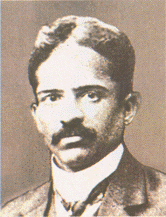
|
BACK
IN INDIA
While on his way to London, the First World War had broken out. An apprehensive Phalke was
reassured by the "business-as-usual" attitude of the Britishers and thought that
the conditions in India would not be very much different. He discovered how wrong he was
the moment he landed in Bombay. The war was being waged in faraway Europe but the Indians
were in totalpanic. Reaching home he discovered that his financiers had withdrawn their
support and his "factory" though not entirely closed, was on the verge of
tottering.
It was another testing period for Dadasaheb Phalke. The equipment that he had ordered from
Britain had already arrived but could not be released due to the lack of finance. The
studio was being run on half the required budget, and though some of the dedicated staff
agreed to work on half their salaries many of the trained technicians wandered off into
other lucrative fields. The final straw was that the supply of imported raw stock had been
severely restricted. Thus, there was no question of making any more feature films.
However, even while making feature films, he had never underestimated the power of the
short film. During the making of his story films he, as an added attraction, continued to
make and exhibit a number of short films : 'A Game Of Matchsticks'( 1913), 'Hand Prints'(
1913) and 'Godavari Views'( 1913). Each film was path-breaking in its own right : the
first named was the first animation film made in India while the second was a short
fiction film about a philandering husband. So when he was forced into a period of
inactivity by restrictions on raw stock due to the uncertaintes of the First World War,
Phalke also made brilliant use of the short film medium when, between 1915 and 1917 he
produced a series of films on a wide variety of subjects : short fiction comedies like
'Soulagna Rasa' and 'Mr. Sleepy's Good Luck'; animated films like 'Animated Coins' and
'Vichitra Shilpa'; topicals like 'Kartiki Purnima Festival' and 'Ganesh Utsav';
documentaries like 'Rock Cut Temples Of Ellora' and 'Bird's Eye View Of Bodh Gaya';
industrial shorts like 'Glass Works At Talegaon'; instructional films like 'Brick Laying';
and even an educational/film appreciation short like 'How Short Films Are Made', produced
with the second version of 'Raja Harishchandra'. Between 1911, when he first began
filmmaking, to 1934, when he retired from the film business, Phalke's production unit the
Hindustan Film Company made a total of 30 short films, of which at least 16 can be
attributed to Phalke himself. The subjects of Phalke's short films during this period
indicate the amount of travelling he was doing - whether to raise funds for his feature
film projects or primarily for the filming of the shorts themselves is not known.
The reason why Phalke was compelled to make a second version of 'Raja Harischandra' was
simple. His sustained endeavour to raise funds for feature film projects had met with
failure. Even his plea to Lokmanya Tilak to loan him money from the Paisa Fund had not
yielded results though Tilak had agreed to the loan. Approaches to the various royal
families had brought forth praise but no money. However by the beginning of 1917, Phalke
had managed to raise Rs. 5000 from an Indore princess through Srimant Talchekar Mamasaheb
and another Rs. 1000 from the Chief of Aundh. This when added to the other smaller amounts
added upto a mere Rs. 8000, an amount which was insufficient for the kind of film Phalke
had in mind.
However, given his ingenuity, this amount sufficed to produce not one but two films : the
newer version of 'Raja Harishchandra' which ran to a mere 2944 feet and another film
called 'Lanka Dahan', which was a little longer at 3000 feet. It was now time for a
miracle! 'Lanka Dahan', wherever it was released. proved to be an unprecedented success.
This inspite of the fact thet it was in direct competition with J.F. Madan's
'Harishchandra' and S.N. Patankar's 'Bhakta Prahlad'. When it was released at the West End
cinema in Bombay the uncontrollable crowds were only satisfied when the theatre management
agreed to hold five shows instaed of the usual four shows a day. In the first ten days the
film collected Rs. 32,000. It was the same story all over India and it is said that in
Madras a bullock cart had to be hired to cart away yhe day's earnings.
|